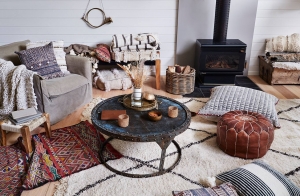please click here:
https://www.shdtimber.com/products.html
Introduction to Movingui Wood
In the global timber trade, Movingui Wood has gained increasing recognition for its unique combination of beauty, strength, and versatility. Known scientifically as Distemonanthus benthamianus, Movingui is a hardwood species native to West and Central Africa, where it thrives in tropical forests. Its golden-yellow to deep honey tones make it a favorite among designers, furniture makers, and architects seeking a luxurious yet durable wood.
Unlike more commonly known tropical hardwoods such as mahogany or teak, Movingui Wood offers a distinctive appearance and performance profile that sets it apart. This article explores its characteristics, advantages, challenges, and key applications, giving you a comprehensive perspective on why it is becoming a global favorite.
Characteristics of Movingui Wood
Appearance and Grain
Movingui Wood is instantly recognizable for its bright golden-yellow hue that can deepen into rich amber over time. The wood often displays a shimmering, lustrous surface, sometimes described as “satin-like.” The grain is generally interlocked, producing dramatic patterns that enhance its visual appeal.
Density and Hardness
It is classified as a medium-to-heavy hardwood. Its density ranges between 600–800 kg/m³ at 12% moisture content. This makes it harder than many temperate hardwoods but lighter compared to some tropical species like ipe or jatoba. Its balance of strength and workable density makes it versatile across multiple industries.
Durability
Movingui is naturally durable against termites and fungi, though it is not as rot-resistant as teak or iroko. It performs well indoors and in protected outdoor environments, especially when treated with appropriate finishes or sealants.
Workability
Woodworkers appreciate Movingui's good machining properties. Despite its interlocked grain, it can be sawn, planed, sanded, and polished to a smooth finish with relative ease. However, sharp cutting tools are necessary to minimize tearing along the grain.
Acoustic Properties
Beyond its visual and structural strengths, Movingui Wood also has excellent acoustic properties. It is sometimes used in the manufacture of musical instruments such as guitars and violins, where tonal richness is critical.
Applications of Movingui Wood
Furniture and Interior Design
One of the most common uses for Movingui is in high-end furniture production. Its striking golden color provides a warm, sophisticated aesthetic that complements both modern and traditional interiors. It is also used for cabinetry, flooring, and paneling.
Veneer Production
Movingui is highly sought-after as a veneer wood. Its natural luster and attractive grain patterns make it ideal for decorative veneers used in luxury furniture, yacht interiors, and upscale architectural projects.
Musical Instruments
Due to its tonal qualities, Movingui finds use in instrument making, particularly for soundboards, guitar backs, and violin components. Its bright resonance makes it a viable alternative to maple or spruce in certain applications.
Decorative Applications
The wood's shimmering appearance makes it desirable for specialty applications such as ornamental carvings, turned objects, and artistic installations.
Comparison of Movingui Wood with Other Popular Woods
| Property / Feature | Movingui Wood | Teak Wood | Mahogany Wood | Iroko Wood |
|---|---|---|---|---|
| Color | Golden yellow to amber | Golden brown | Reddish brown | Yellow to dark brown |
| Density (kg/m³) | 600–800 | 650–750 | 500–850 | 650–750 |
| Durability | Moderately durable | Highly durable | Moderately durable | Durable |
| Workability | Good, with sharp tools | Excellent | Very good | Good |
| Common Uses | Furniture, veneer, flooring | Outdoor furniture, boats | Furniture, interiors | Decking, furniture |
| Acoustic Quality | Excellent | Good | Very good | Moderate |
| Cost | Moderate to high | High | Moderate to high | Moderate |
This table illustrates that Movingui Wood shares many characteristics with premium hardwoods but stands out for its exceptional acoustic qualities and visual luster.
Advantages of Movingui Wood
-
Aesthetic Appeal: Its golden hue and satin-like shimmer bring elegance to any project.
-
Versatility: Suitable for furniture, veneers, musical instruments, and flooring.
-
Workability: Easy to machine and finish compared to some denser hardwoods.
-
Sustainability Potential: With proper sourcing and forest management, it can be part of responsible wood trade.
Challenges and Considerations
Seasonal Movement
Movingui, like many tropical hardwoods, has a moderate tendency to shrink or swell depending on moisture levels. Careful seasoning and kiln drying are necessary before use in final products.
Allergic Reactions
Some workers report mild skin or respiratory irritation when working with Movingui sawdust. Proper protective equipment is advised during machining.
Market Availability
Although gaining popularity, Movingui Wood is less widely available in global markets compared to teak or mahogany. This can lead to higher costs and sourcing challenges.
Movingui Wood in Sustainable Forestry
The demand for tropical hardwoods often raises questions about sustainability. Movingui is not currently listed as endangered, but responsible harvesting practices are essential to prevent overexploitation. Certification through organizations such as FSC (Forest Stewardship Council) ensures that the wood is harvested in an environmentally and socially responsible way.
For eco-conscious consumers and designers, verifying certification is crucial when purchasing Movingui products. Its moderate price and premium aesthetics make it an appealing sustainable alternative to overharvested species.
How to Maintain Movingui Wood Products
Cleaning
Dusting with a soft cloth and using non-abrasive cleaning solutions help maintain the wood's natural shine.
Finishing
Applying oils, varnishes, or polyurethane enhances durability and brings out the golden tones.
Protection from Moisture
Although moderately durable, Movingui products used outdoors should be sealed regularly to prevent moisture-related damage.
Periodic Refinishing
Furniture and flooring may require periodic sanding and refinishing to preserve their luxurious look.
Future of Movingui Wood in Global Markets
As architects and designers search for alternatives to overexploited hardwoods, Movingui is gaining traction for its sustainable potential, beauty, and versatility. With increased awareness of responsible sourcing, Movingui Wood is poised to occupy a stronger place in international timber markets, particularly in luxury interior design and specialty woodworking sectors.
Frequently Asked Questions about Movingui Wood
1. What makes Movingui Wood unique compared to other hardwoods?
Its golden color, satin-like shimmer, and excellent acoustic properties set it apart from other tropical hardwoods.
2. Is Movingui Wood suitable for outdoor use?
It is moderately durable outdoors, but sealing and maintenance are recommended to extend its lifespan.
3. How does Movingui compare to teak in terms of durability?
Teak is more durable and resistant to decay, while Movingui excels in aesthetics and acoustic properties.
4. Can Movingui be used for flooring?
Yes, it is suitable for flooring due to its hardness and attractive appearance, though regular care is required.
5. Is Movingui Wood considered sustainable?
Yes, when sourced through certified forestry programs, it is considered a sustainable option.
Summary
Movingui Wood is a golden-hued African hardwood valued for its beauty, workability, and acoustic qualities. Used in furniture, veneers, flooring, and instruments, it rivals teak and mahogany while offering unique visual appeal. When responsibly sourced, it is a sustainable luxury material.






